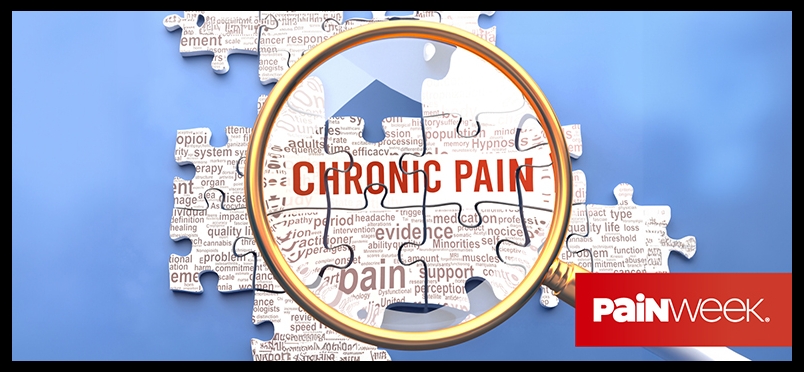| acute pain management
From Awareness to Action: Driving Change in Pain Care for 2024

Each September, Pain Awareness Month serves as a vital reminder of the millions of individuals living with chronic pain and the importance of ongoing research to improve prevention and treatment.
With chronic pain affecting 50 million Americans and significantly impacting daily living and mental health, it's crucial to understand the scope of this issue and how we, as healthcare professionals, can optimize patient outcomes.
A Brief History of Pain Awareness Month
Pain Awareness Month was established in 2001 by the American Chronic Pain Association (ACPA). The ACPA led a coalition of organizations to designate September as a time to elevate pain awareness. Partners for Understanding Pain and a collective of 80 organizations—ranging from healthcare professionals to consumer advocacy groups, including the NAACP—joined forces to support this initiative.
Active involvement is crucial in raising awareness. In honor of Pain Awareness Month, explore the many ways you can contribute and make a meaningful impact in your patients' lives.
Understanding the Scope: Key Statistics on Chronic Pain
To grasp the scale of the chronic pain crisis, consider these statistics:
-
61.4% of those reporting chronic pain in 2019 still experienced it a year later.
-
1 in 5 experience chronic pain and struggle with daily activities.
-
Chronic pain sufferers face a 5x higher risk of depression or anxiety.
-
40% of patients report that their pain treatment is ineffective.
-
Racial Disparities: Black and Hispanic patients often receive less adequate care than their white counterparts.
-
Gender Bias: Women are more likely to experience chronic pain yet often receive less effective treatment.
These statistics underscore the need for improved understanding, treatment, and support for patients living with chronic pain.
The Complex Nature of Chronic Pain
Chronic pain is not just a physical sensation; it's a complex and subjective experience involving sensory and emotional components. It's a highly individual experience that can significantly alter one's quality of life. The annual cost of chronic pain in the U.S. is estimated to be between $560 and $635 billion, including medical expenses and lost productivity.
Understanding the multifaceted nature of chronic pain is crucial for developing effective treatments and support systems. Unfortunately, the underlying complexity often leads to ineffective treatment.
Top Two Ways to Drive Pain Support This Pain Awareness Month
As we enter September and Pain Awareness Month, there are numerous ways to get involved and make a difference:
#1 Become a Pain Advocate and Spread Awareness
To drive lasting change, consider these advocacy efforts:
-
Stay informed about legislation related to chronic pain and support relevant initiatives. For example, as of the time of this writing, the CANP's Action Center needs your support of SB 1451 to help those in California's underserved communities access quality, timely care.
-
Back organizations dedicated to chronic pain advocacy, such as the American Chronic Pain Association (ACPA) and the U.S. Pain Foundation.
-
Engage in Pain Awareness Month activities to help spread the word and drive change.
-
Go to the International Association for the Study of Pain (IASP) for educational resources and social media graphics and donate in honor of Pain Awareness Month.
-
Visit the American Society of Anesthesiologists (ASA) to discover patient stories and take a patient-facing quiz to support those in pain.
-
Listen in to the American Academy of Pain Medicine (AAPM)'s Pain Matters Podcast for expert insights.
#2 Restock Your Pain Management Clinical Toolkit
Join us at PAINWeek 2024 (Sept. 3-6) in Las Vegas and help reverse the alarming rise in chronic pain suffering. With the collective expertise of over 85 faculty members, PAINWeek offers more than 75 courses designed to empower your practice. Here’s a glimpse of what’s in store:
-
Can Artificial Intelligence Personalize Pain Treatments? Presented by Neel Mehta, MD; Antje M. Barreveld, MD; Mattias Ohlsson, PhD
-
Foundations of Psychedelic Medicine: A Clinical Perspective Presented by Eugene Vortsman, DO, FACEP
-
Debate: The Highs and Lows of Medical Cannabis for Chronic Pain Presented by Paul J. Christo, MD, MBA, and Shravani Durbhakula, MD, MPH, MBA
-
Working With Culturally Diverse Patients: A Pain Management Psychologist Perspective Presented by Susan Fitts, PsyD, and Emilia Moreno, PsyD
-
Analgesics of the Future Presented by Jeffrey Gudin, MD
...and much more!
To learn more and register for PAINWeek 2024, click here.
For those unable to attend in person, on-demand access to PAINWeek 2024 content will be available from November 2024 to November 2025. Learn more here.
Key Takeaway
Chronic pain is a pervasive and intricate issue, requiring ongoing research, enhanced treatments, and heightened public awareness. By staying informed, advocating for those affected, and engaging in Pain Awareness Month initiatives, you can drive better outcomes and elevate the quality of life for everyone enduring chronic pain.
Other Categories:
Did you enjoy this article?
Subscribe to the PAINWeek Newsletter
and get our latest articles and more direct to your inbox
